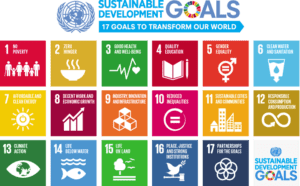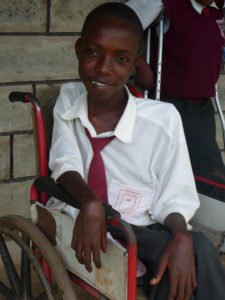Objectives
- To see orphans and vulnerable children across the world reach their full God-given potential
- To provide opportunity for those in The United States to support, serve and love people overseas in a practical way
 Purpose
Purpose
Sponsorship exists to fulfill His Word. The direction and responsibility God has given us for His people are clear:
“Learn to do good. Seek justice. Help the oppressed.
Defend the cause of orphans. Fight for the rights of widows.”
Isaiah 1:17
The Sponsorship Program exists to bring the children of the world hope, opportunity and life. The Salvation Army founder, William Booth, said, “While children go hungry, as they do now, I’ll fight. While there is a poor lost girl upon the streets, I’ll fight.”
United Nations Sustainable Development Goals
The United Nations Sustainable Development Goals (SDGs) were developed in 2015. The Salvation Army supports The SDGs not only because they bring attention to human rights violations such as poverty, access to quality education, access to clean water, hunger, and many more things. What is different about the Sustainable Development Goals from its predecessor, the Millennium development Goals, is that these are goals for all countries. The entire world is working together to reduce inequalities and make the world a better place. In total, there are 17 Goals:

The Needs of Children
The USA Central World Missions Department contacted our overseas colleagues and asked them, “How can we help you?” Seventeen Salvation Army territories, representing twenty-seven developing countries responded with a list of current needs they are experiencing. The overwhelming need was found to be in educating the five hundred forty thousand vulnerable children within the care of Salvation Army schools.
Since 2003 Primary education has ‘technically’ been free – however, all government schools manage to find things to charge for – e.g. tuition, maintenance, a whole host of things and if the parents do not pay the children are sent home. Classes are very large – up to about 80 children and quality of teaching variable. All children must wear school uniform, and they are sent home from school if they do not have it. Children start primary school around the age of 6 years, but they have to go to nursery school first – and this is not free. They usually start nursery at 3 years and attend for three years – they have to wear uniform. There are no government nurseries so all parents have to pay – classes are again large – it is common to have between 50 and 80 children in one learning environment. If they start nursery at a later age they will automatically start school later and be behind age wise for the remainder of their education. Secondary education has ‘technically’ been free since the beginning of 2008 – but every school charges because government funds are insufficient to provide. Every child must wear the school uniform – however ragged it is – and I have seen some school uniforms literally hanging off the child.
– Ruth Vincent, Former Sponsorship Coordinator, Kenya East Territory
Education helps reduce poverty, but poverty prevents education. Many children are forced by their parents and family to work at a young age which prevents them from attending school. Often what can cause this situation are ill or deceased parents, many as a result of the HIV/AIDS pandemic. When children aren’t in school being educated on HIV/AIDS prevention and care, knowledge is not instilled in them, only fear that is a result of unawareness.
The execrable toll on young people goes beyond living with HIV/AIDS. It has left countless children orphaned and vulnerable, has derailed decades of gains in development benchmarks, including life expectancy, and has diverted precious resources from social services. The pandemic has ravaged the education sector, which is losing not only crucial funds and supplies but also its most important resources – teachers and administrators. In hard-hit countries, school availability has plummeted. As education opportunities dwindle, girls are sacrificed.
– UNICEF’s Gender Achievements and Prospects in Education: The GAP Report | Part One
Sponsorship funds strive to reach the goal towards growing and empowering God’s children throughout the world. Specifically, this education assistance covers school uniforms, mobility products, equipment and current technology, curriculum materials, activity materials, Bible education, feeding programs, medical supplies, property maintenance, dormitory maintenance and administrative costs.
Partnering Countries
The Salvation Army is serving in over 130 countries. The Central Territory supports by means of aiding over 100 schools, children’s homes, homes for the disabled, homes for the blind, homes for street children, early childhood education centers, day centers for street children, day nurseries and drop in centers for youth for over 40 countries.
Discretionary Sponsorship
In order to provide equal support, benefits and opportunity for ALL children involved in The Salvation Army’s Sponsorship program, the USA Central Territory only offers sponsorship in the form of discretionary sponsorship. The life of an orphaned and vulnerable child is unstable and unfair. When only certain children in the home receive the benefits of sponsorship and the others look on and wonder why they are not sponsored, inequality and the feelings of not being valued are perpetuated. This program aims to serve all of the children, not a select few. This form of sponsorship benefits all the children involved and ensures equal opportunity and creates self-worth. It also reduces unnecessary tension among children and allows the staff to make better use of time and energy at the home, school or center.
Will You Join Us?
If you have further questions or would like more information, see the side bar for a Sponsorship Application, Frequently Asked Questions, and how to contact us.
If you are viewing this on mobile:



